Building on Brownfield Sites – Year 2024
As a university located in the historic Dusit district—once a royal precinct and a formative center of Thai educational heritage—Suan Dusit University has adopted a “Brownfield-First Development Model” as its core spatial development strategy. This model prioritizes the renovation, adaptive reuse, and enhancement of existing sites before any new land expansion, in order to prevent encroachment on green spaces, reduce consumption of natural resources, and preserve the architectural and cultural heritage of the institution.
This policy forms a key component in advancing SDG 11 — Make cities and human settlements inclusive, safe, resilient, and sustainable, particularly Indicator 11.4.9, which emphasizes the reuse and transformation of previously developed (brownfield) sites to generate new educational and social value.
Policy and Development Principle: Brownfield-First Development Model
Suan Dusit University has adopted a development principle aligned with its standards for sustainable building planning and development (SDG 11.4.8), establishing a unified institutional standard for the development of new buildings and learning spaces under the Brownfield-First Development Model. This approach prioritizes the renovation and enhancement of existing sites before any new land expansion, in order to preserve the University’s existing green spaces.
All planning and construction activities in 2024 were carried out in full compliance with national regulations and building standards, with transparency ensured through the e-Bidding system and public disclosure via the University’s official platforms, including:
- Ministerial Regulation of the Ministry of Energy (2021) on the standards for energy-efficient building design, which provides the framework for designing buildings that conserve energy through the use of natural lighting, appropriate ventilation, and materials that reduce heat loss.
- Ministerial Regulation No. 69 (2021) issued under the Building Control Act B.E. 2522 (1979), which sets requirements for building structure and stability, fire escape routes, ventilation, and safety inspections for public buildings.
- Occupational Safety, Health, and Working Environment Act B.E. 2554 (2011), which requires all educational institutions to establish an Occupational Safety Committee (KPO) responsible for overseeing safety measures in construction areas and academic buildings.
In summary, Suan Dusit University’s 2024 development approach requires that all new construction or renovation projects prioritise the use of existing sites before expanding into new land, in accordance with the standards outlined above. This approach mandates that each project undergo a Reuse Assessment to evaluate the feasibility and potential of upgrading existing buildings before considering new construction. This system reflects the University’s commitment to environmental responsibility and circular economy principles.
Brownfield Redevelopment Projects – 2024
1. Renovation of Buildings in the Science Center to Enhance Safety, Energy Efficiency, and Environmental Sustainability
Suan Dusit University has undertaken renovation projects within the Science Center, particularly focusing on the Chalermphrakiat 50th Anniversary Maha Vajiralongkorn Building, which serves as a central facility for teaching, research, and public services. This main building has been in use for over 20 years. While the original structure has been retained, upgrades were made to electrical systems, ventilation, and interior materials to support energy conservation and environmental sustainability.
Additionally, on 10 January 2024, the Department of Public Works and Town & Country Planning conducted an official inspection of both the Chalermphrakiat Building and the Science Center Residential Building, together with the Office of Buildings and Facilities and the Office of Science Building Services. The inspection assessed: Structural integrity Electrical system safety Ventilation system performance Fire protection and emergency systems to ensure full compliance with the Building Control Act B.E. 2522 (1979).
Safety and Fire Protection System Improvements, The Office of Science Building Services upgraded the automatic sprinkler system within the building, and improved residential rooms and safety systems in the Science Center Residential Building. In addition, an Emergency Response Committee was established, and the 2024 Annual Fire Drill and Evacuation Exercise was conducted to enhance safety standards in operational areas. The Science Center also organized fire suppression and emergency evacuation training, further reinforcing preparedness and safety awareness among building users.
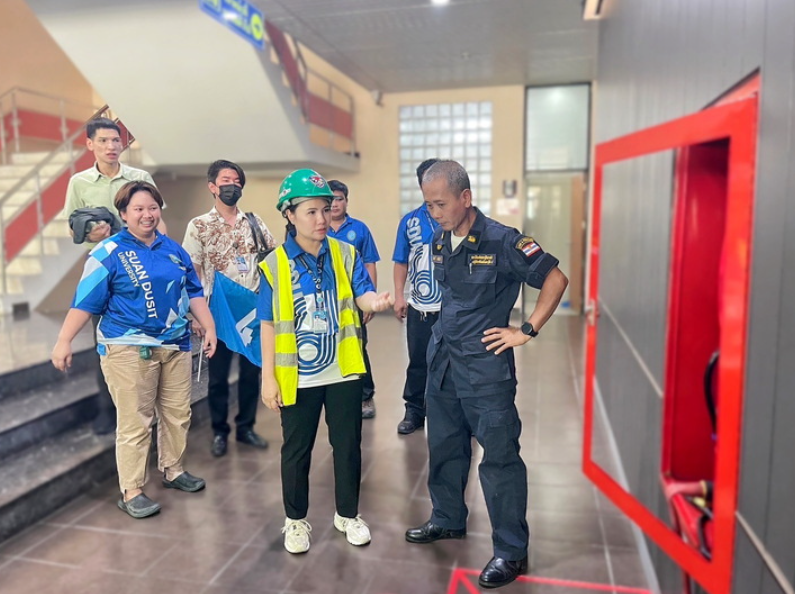
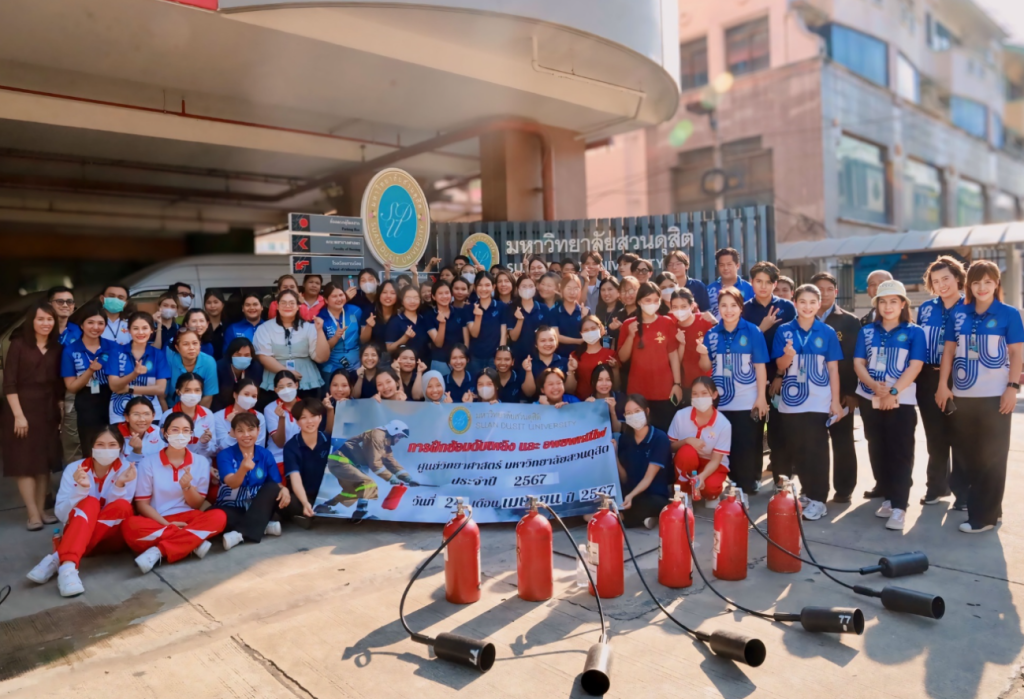
Monitoring and Management of Renovation Work by the Science Center Committee. In 2024, the Science Center convened multiple management committee meetings to report on the progress of building renovations, the development of science laboratories, and the evaluation of additional space for more efficient use. These meetings also guided the implementation of the Green & Clean University initiative. The process has been carried out continuously with participation from administrators across relevant University units.
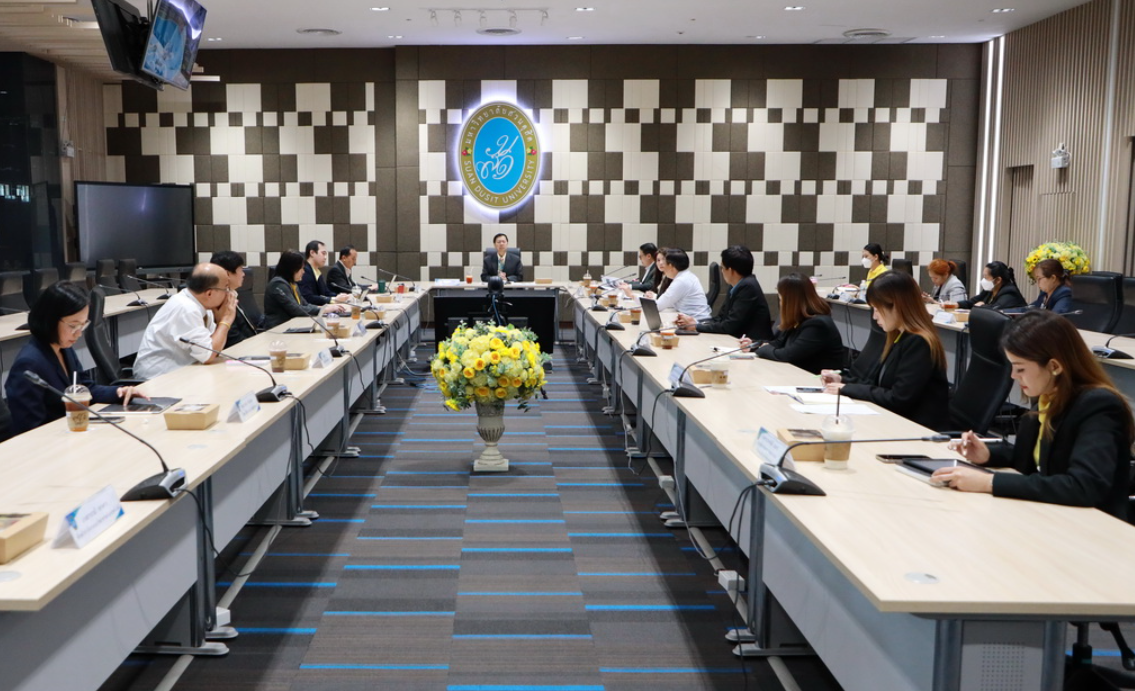
Environmental Management Monitoring and Development by Local Authorities. The Bang Phlat District Office of the Bangkok Metropolitan Administration conducted a site inspection of waste management operations at the Science Center, Dusit Narumon Food Center, and designated waste collection points, in preparation for an official waste management review of the Science Center by the Deputy Governor of Bangkok.
This aligns with the Bangkok Governor’s environmental policy, which aims to establish exemplary waste separation models, and expand district-wide comprehensive waste separation systems. The initiative focuses on source separation, particularly of general waste and organic waste, and promotes active participation from all sectors to maximize waste utilization at the point of origin.


2. Renovation of the Early Childhood and Primary Education Building Complex, La-or Uthit Demonstration School
The renovations were carried out within the University’s existing footprint, making full use of long-standing building structures to maximize the value of existing space. La-or Uthit Demonstration School, located in the Dusit district, upgraded its Early Childhood and Primary Education building complex to enhance modern functionality, safety, and environmental friendliness. Interior finishing materials, flooring, ceiling, and wall coatings were replaced with low-VOC and non-toxic materials, in accordance with the TOR requirements published through Suan Dusit University’s e-Bidding system, ensuring compliance with health and indoor environmental standards, particularly for early childhood learners who are a health-sensitive population group.
– In addition, building and environmental systems were improved, including:
– Upgrading classroom lighting to meet illumination standards of the Department of Public Works and Town & Country Planning
– Replacing floor and wall materials with sound-absorbing products to reduce acoustic reflection in classrooms and activity rooms
– Enhancing ventilation systems and natural lighting, improving air circulation, reducing humidity, and lowering electricity use
– Upgrading fire suppression systems, lightning protection, and emergency exit routes, in compliance with the Building Control Regulation and school safety requirements
Beyond classroom buildings, the surrounding outdoor spaces—including playgrounds, activity yards, and tree-lined walkways—were also improved to support a healthy, stimulating, and developmentally appropriate learning and recreational environment for children.
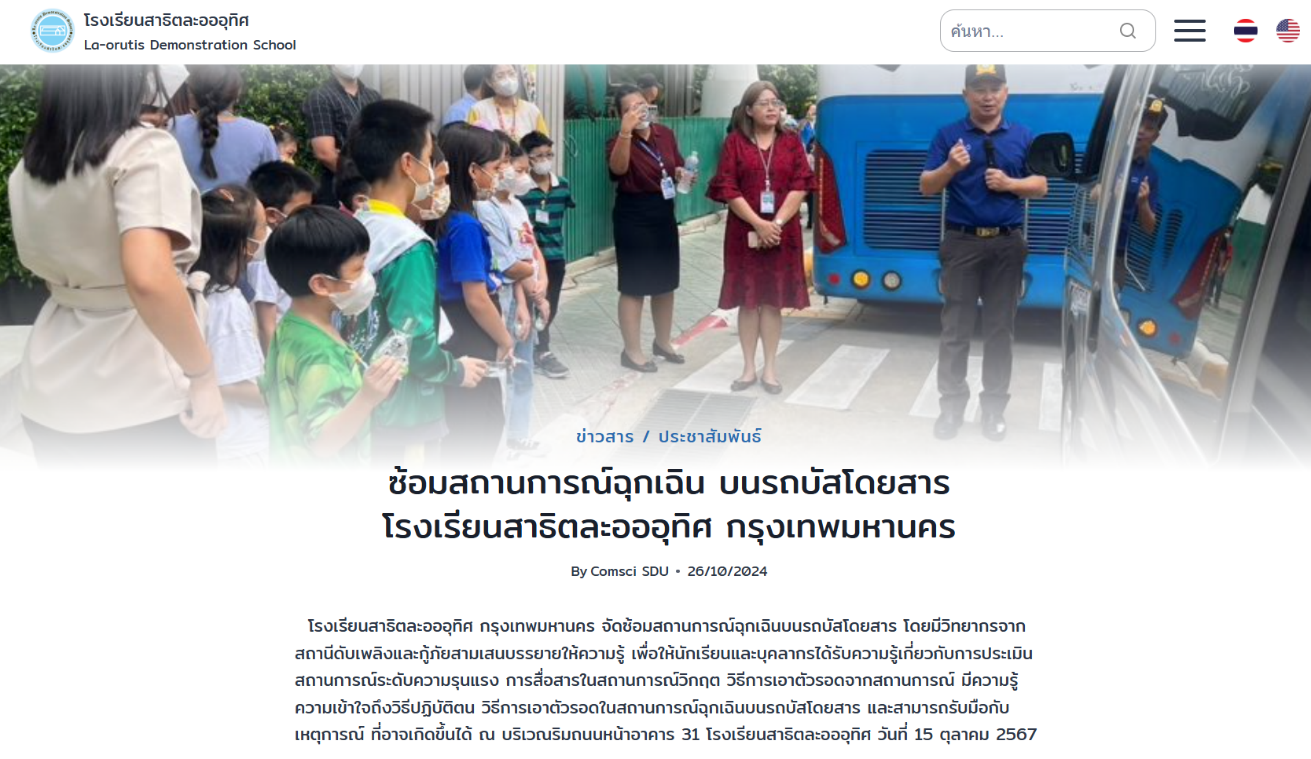
3. Renovation of the Faculty of Education Building, Physical Education Building, Yaowapa Cultural Building, and the One World Library (OWL)
Suan Dusit University has carried out renovation projects for a group of existing buildings in the Dusit campus under the “Reuse before Expand” policy, which emphasizes maximizing the use of existing spaces without expanding new construction areas. This approach aims to preserve the environment, the historical urban landscape, and the cultural context of Dusit as a “heritage site of Thai education.” The renovations focused on upgrading internal building systems—such as electrical systems, ventilation systems, flooring, and ceilings—by using energy-efficient, environmentally friendly, and safety-compliant materials. In addition, Smart Learning Space and Digital Teaching System technologies were installed to transform the existing learning environment into a modern educational ecosystem without the need for new building construction.
Throughout the process, the University President, executive team, and relevant unit administrators conducted ongoing site inspections to monitor progress and ensure alignment with sustainability and academic development standards.
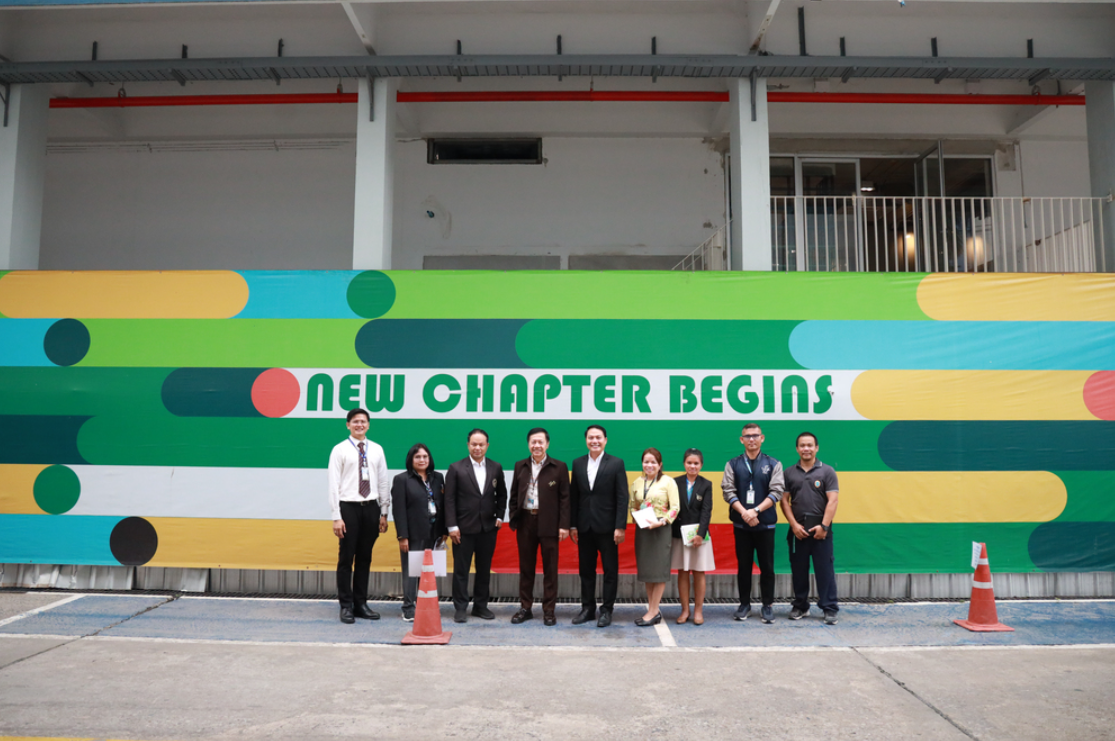
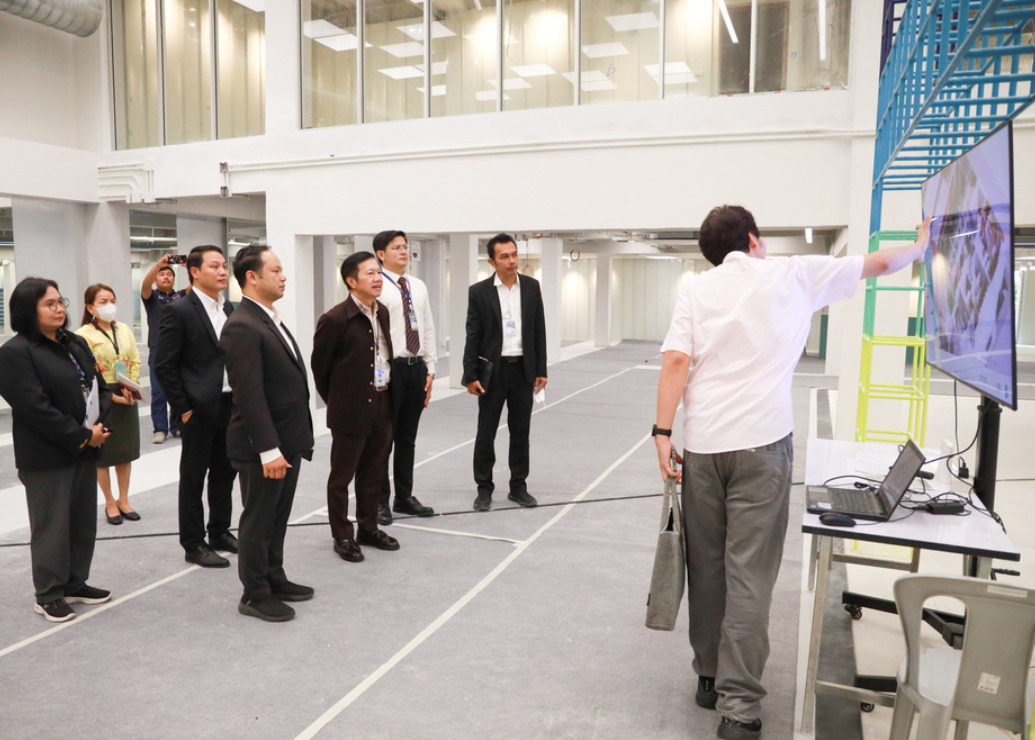
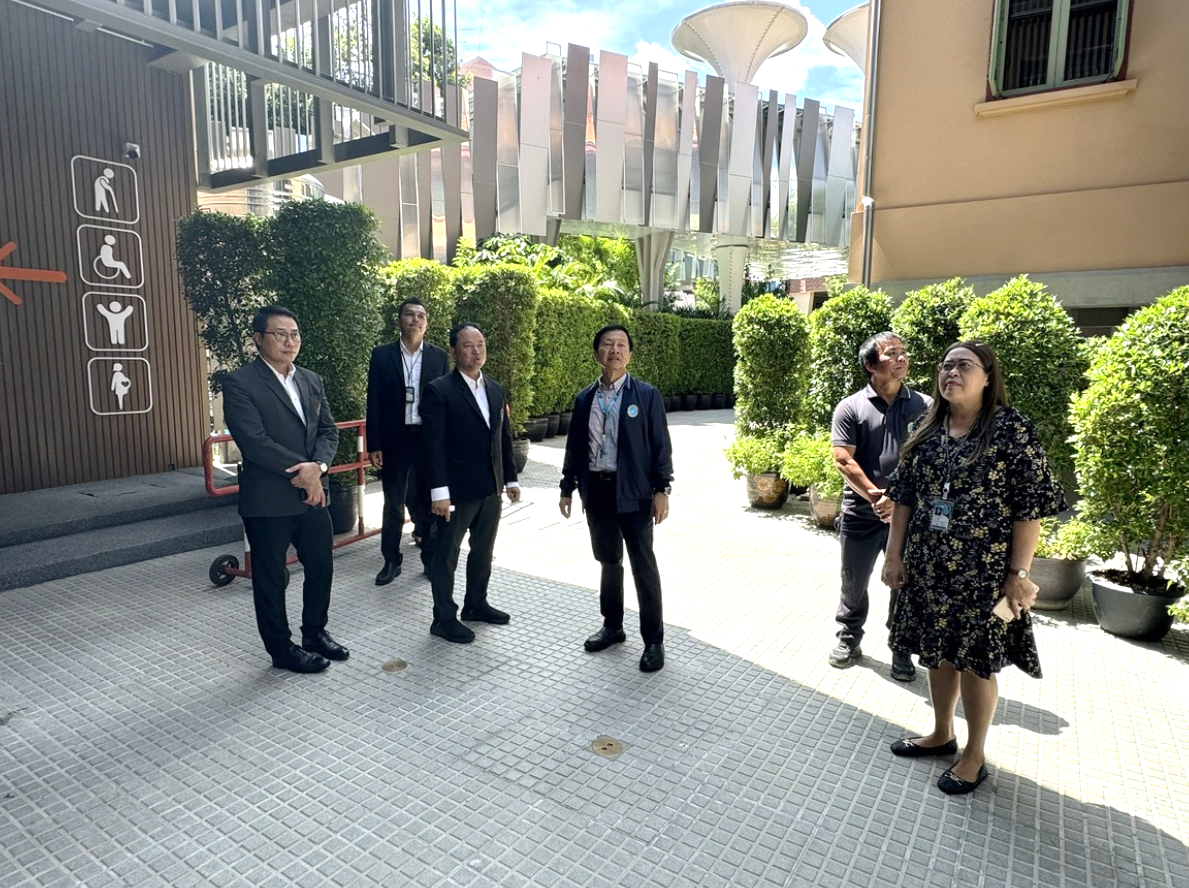
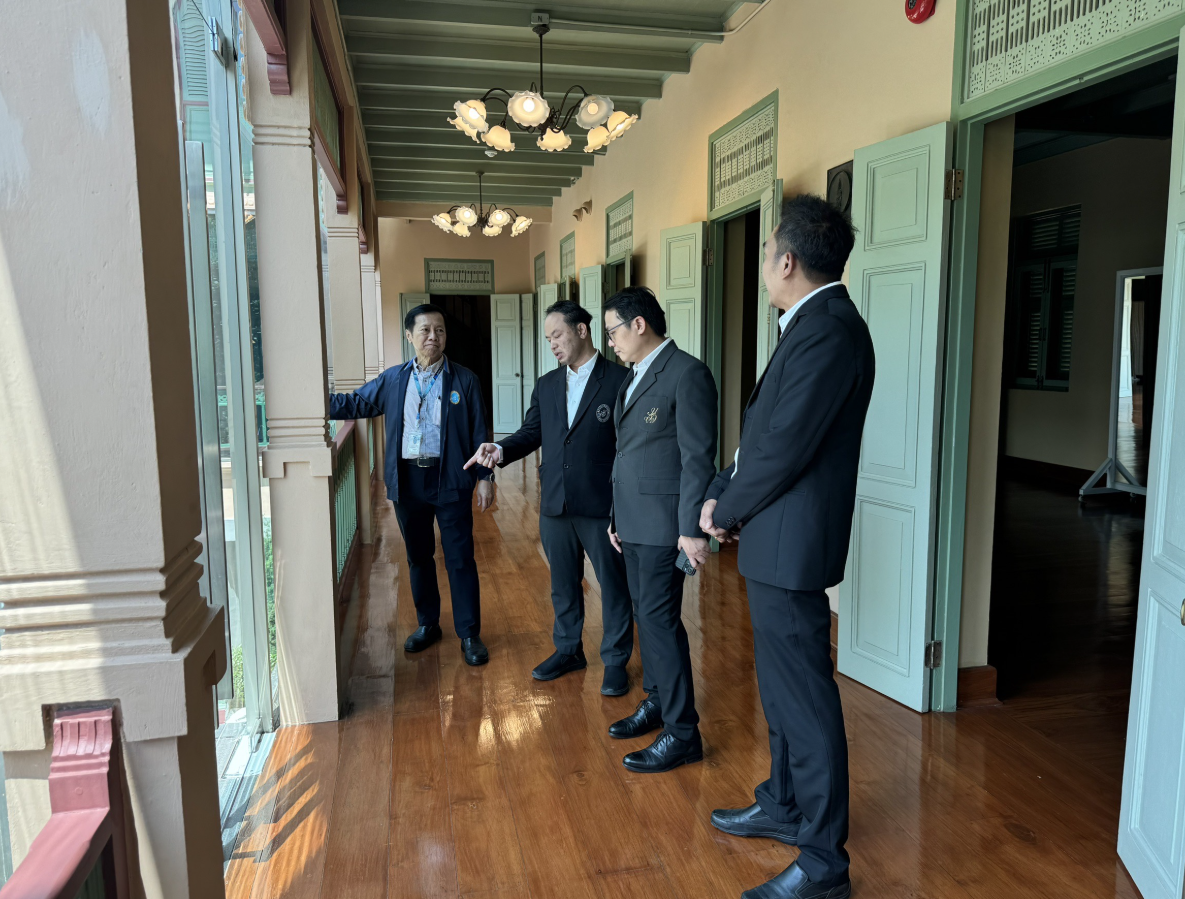
4. Suphanburi Campus: Revitalising Existing Learning Spaces and Green Landscape Development
The project “Landscape and Surrounding Area Improvement for the SDU Library Learning Hub” utilized the existing building and practice courtyard of the Suphanburi Campus as the foundation for development. The project expanded green space and installed a new drainage system without extending beyond the original land boundary. This serves as an example of revitalising previously underused or dormant areas and bringing them back into active and meaningful use.
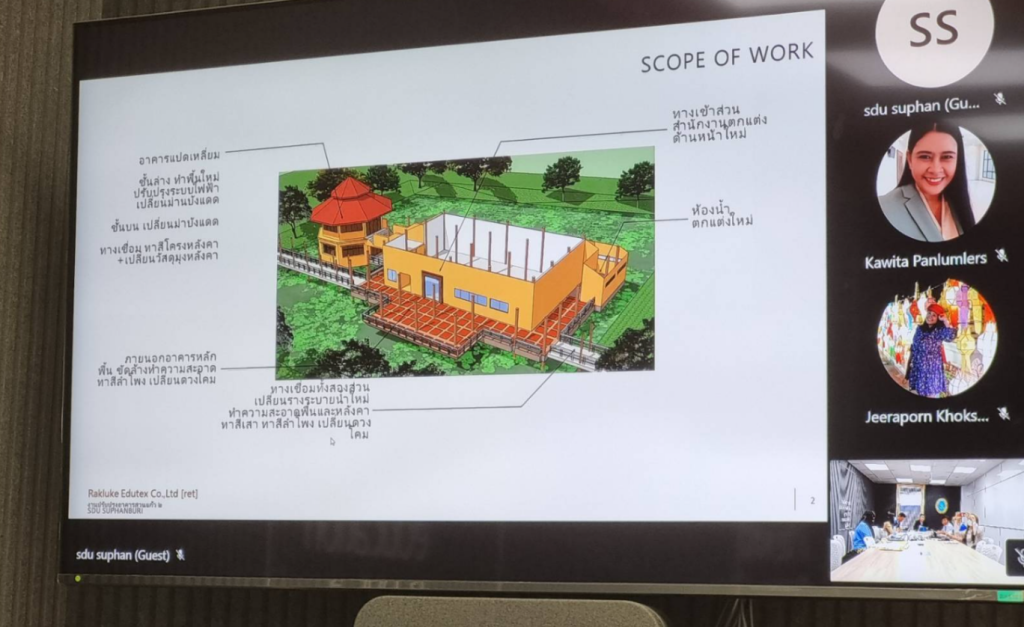
Overall Summary: Revitalising Existing Sites and Advancing Sustainable Building Development
The implementation of the Brownfield-First Development Model at Suan Dusit University in 2024 demonstrates a deep understanding of sustainable development that integrates environmental, social, and cultural dimensions at both policy and operational levels. Rather than expanding into new construction areas, the University has adopted a strategy of adaptive reuse and refurbishment of existing buildings and spaces—preserving the historical identity of the Dusit area as part of Thailand’s educational heritage—while upgrading energy systems, lighting, ventilation, and building materials to meet international green building and safety standards. The result is a harmonised balance between “a valued past” and “a sustainable future.”
Key initiatives—such as the renovation of the Science Center, the upgrading of the La-or Uthit Demonstration School, the refurbishment of the Faculty of Education Building, Physical Education Building, Yaowapa Cultural Building, and the One World Library, as well as the transformation of the SDU Library and surrounding green landscape at the Suphanburi Campus—were all carried out within existing land and building footprints. These efforts not only reduce environmental impact and conserve natural resources, but also enhance learning effectiveness, energy efficiency, and the overall well-being of students and staff.
This approach represents a model of Responsible Campus Regeneration, grounded in environmental science and management, strengthened through digital innovation and cultural identity. It enables the University to grow without encroachment and develop without destruction, truly aligning with Sustainable Development Goal (SDG) 11.
“Suan Dusit University — A Living Campus of Heritage and Sustainability.”
